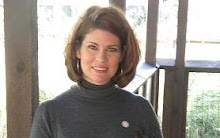Avi The True Confessions of Charlotte Doyle. New York: Harper Collins Publishers, 1990. ISBN 0380714752
PLOT SUMMARY:
The year is 1832. Mr. Doyle, an American businessman, and his family are transferred from London, England back to America. Thirteen year old Charlotte Doyle, in order to finish her school year, follows later as the only female passenger aboard the merchantship Seahawk. During her journey, young Charlotte finds friendship and support in places she never dreams of, sees through society's prejudices, find courage to overcome betrayal, strength to prove herself and chooses to make amends for acts of transgression.
CRITICAL ANALYSIS:
Avi recreates an accurate account of a sea passage on the Atlantic in the year 1832. At that time, this trip would take Captain, passenger and crew one to two months on the sea to reach their destination. In a flashback, Charlotte Doyle tells her story in first person narrative. Appropriate dialect is used when each character speaks, identifying the cast level of the characters in the book. Aboard the ship are: a well- mannered Captain Jaggery with a ruthless reputation for brutality, Zachariah, the black ship's cook, who befriends young Charlotte, First Mate Mr. Hollybrass, Second Mate Foley and a "motley" crew of all temperaments. This realistic work of fiction allows the reader to live vicariously through Charlotte. The journey upon the Seahawk has high and low tides, truth, understanding, misunderstanding, surface judgments about others and ends in a surprising conclusion. This is a credible fresh account of a time where invisible "rules" governed behavior, dress, attitude, socialization and class separatism.
Avi includes a number of references at the end of the book. There is a labeled diagram of a merchant ship, an explanation of "Ship's Time", explanation of the crew hierarchy and a ship's chain of command. Charlotte's position and restrictions within society are clearly presented when introducing her as the main character. Class stereotyping is addressed. Avi's main character, Charlotte, goes through a metamorphosis of ideas and behavior to blossom in an unexpected way. This historical fiction is worth the read! The True Confessions of Charlotte Doyle is a fresh account of history. Seeing through Charlotte's eyes can "hook" young readers to this genre.
Images Credited to:
http://bibliodyssey.blogspot.com/2009/05/claremont-fashion-plates.html
http://www.victoriana.com/lady/palmer.html
AWARDS WON AND REVIEW EXCERPTS:
ABC Children's Booksellers Choices Award, 1991 Winner Young Adult Fiction United States
Boston Globe-Horn Book Award for Excellence in Children's Literature, 1991 Winner Fiction United States
Evergreen Young Adult Book Award, 1993 Winner Washington
Golden Kite Award, 1991 Award Book Fiction United States
Jefferson Cup Award, 1991 Honor Book United States
John Newbery Medal, 1991 Honor Book United States
Judy Lopez Memorial Award for Children's Literature, 1991 Winner United States
Massachusetts Children's Book Award, 1996 Winner Massachusetts
Sunshine State Young Reader's Award, 1994 Winner Grades 6-8 Florida
Utah Children's, Informational, and Young Adults' Book Awards, 1994 Winner Young Adult's Book Award Utah
School Library Journal:
“On a long, grueling journey from England to Rhode Island in 1802, a 12-year-old changes from a prim and proper girl to a swashbuckling mate of a mutinous crew and is accused of murder by the captain. Awash with shipboard activity, intense feelings, and a keen sense of time and place, the story is a throwback to good old-fashioned adventure yarns on the high seas . . . . A breathtaking seafaring adventure.”
Kirkus (Kirkus Reviews, 1990)
Returning from Britain in 1832 to her family in Rhode Island, 13-year-old Charlotte tangles with a tyrannical sea captain and his mutinous crew. In the book's first half, Charlotte paints a painfully chilling self-portrait of a girl brainwashed by her father into acceptance of male, and class, authority. But after persistently acting as Captain Jaggery's spy--long after the reader knows he's a villain--and even betraying the well-justified mutiny that's brewing, Charlotte makes a heroic turnaround in response to Jaggery's brutal lashing of Zachariah, the ship's cook as well as the wisest person (and only black man) aboard. She wins the crew's forgiveness by climbing to the royal yard (as they've dared her to do) and becomes one of them--only to find that, after such a taste of independence, home is not the safe harbor she imagined. Plucky Charlotte, whose hard-won competence as a sailor is paralleled by her moral growth, survives enough surprising reversals and suspense to rival the adventures of Jim Hawkins. Tautly plotted, vividly narrated, carefully researched: a thrilling tale deepened by its sober look at attitudes that may have been more exaggerated in the past but that still persist. 1990, Orchard/Watts, $14.95; PLB $14.99. Starred Review. © 1990 Kirkus Reviews/VNU eMedia, Inc. All rights reserved.
CONNECTIONS:
- Subject Headings from CLCD
- Mutiny Fiction.
- Sex role Fiction.
- Self-perception Fiction
- Ships Fiction.
- Sea stories.
Avi Official Website
History behind the book























.jpg)




